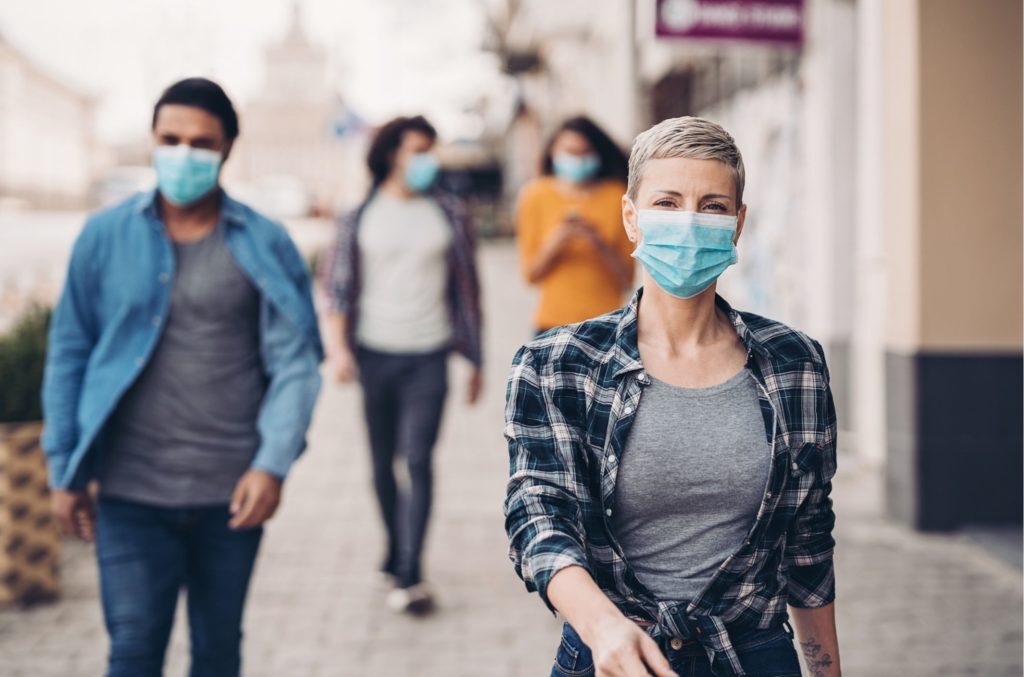Almost all mental health professionals would tell you that depression isn’t caused by a single event—and most of the time, they’d be right. But in the case of situational depression, also called reactive depression, there’s a clear situation or event that triggers the condition.
Situational depression occurs following a stressful experience or event. It’s a short-term condition that makes it challenging to adjust your emotions or behaviors in the aftermath of a significant stressor.
What is reactive depression?
Reactive depression, or situational depression, is distinct from other types of depression in that it’s traceable to a specific situation or event. Clinical depression is understood to arise out of a complex mix of factors, including your neurobiology, genetics, social and cultural environments, and life experience.
That’s why situational depression isn’t considered a depressive disorder by clinicians. Instead, it falls under the umbrella of adjustment disorders, emotional or behavioral responses to life changes and stressful events.
Reactive depression can occur based on a single event like a divorce or ongoing situations like chronic illness or work stress. Whatever the trigger, this condition seems to be a maladaptive stress response.
As a human, you’re capable of digesting, processing, and moving through stress. But with maladaptive responses, you may resort to coping strategies that actually make it harder for you to adapt to challenging circumstances successfully. Some examples of maladaptive behavior include binge eating, over-consuming alcohol or other substances, and physical self-harm. Learn more about substance use issues and how to treat them.
Symptoms
In non-clinical language, an adjustment disorder means that you went through something really difficult or stressful within the last 3 months, and, as a result, you’re now having difficulty adapting.
Perhaps you’re feeling hopeless, drained, anxious, or are having difficulty functioning at work, school, or in your social life. While these issues are understandable experiences across the board, someone with an adjustment disorder experiences them in a way that’s severe or intense enough to disrupt their ability to function over the long term.
The impact of an adjustment disorder can be more serious than you or others might expect. Some possible symptoms of situational or reactive depression include:
- Feeling sad
- Feeling hopeless
- Crying regularly
- Not being able to enjoy activities
- Sleeping issues like insomnia
- Inability to function at work or school
- Difficulty focusing
- Feeling mentally foggy
- Being overwhelmed
- Having a hard time taking care of yourself day to day
- Not being able to attend to things like paying bills or showing up for commitments
Diagnosis
In clinical language, situational depression can be diagnosed as “adjustment disorder with depressed mood” or “adjustment disorder with mixed anxiety and depressed mood.”
In order to be diagnosed with situational depression, you must meet the following medical criteria:
- Emotional or behavioral symptoms in response to a stressor that occur within 3 months of the stressor
- Clinically significant symptoms, marked by at least 1 of the following:
- Disproportionate distress to the stressor, taking context into account
- Significant impairments in your work, social, or home life
- Your distress doesn’t meet the criteria for another mental health condition and isn’t attributable to the worsening of a prior condition
- The distress is not explained by “normal” grief or bereavement
Situational depression and adjustment disorders last up to 6 months. If the symptoms persist for longer than 6 months, it’s time to consider another diagnosis.
Causes
Clinical depression is caused by a complicated mix of factors. When it arises because of internal factors, it’s known as endogenous depression. When depression occurs because of external situations, it’s called exogenous depression.
There’s no predefined list of what types of stressors might trigger situational depression. The stressors can be things we’d consider negative, like the loss of a job. But they may also be desirable changes like a move or the end of an unhealthy relationship.
Here are some potential stressors that can trigger reactive depression:
- Interpersonal conflict
- Death of a loved one
- Job loss
- Financial difficulties
- Illness in a loved one or getting ill yourself
- A significant life change like a move
- A frightening event where you experienced a real or perceived threat of death
- An event that impacts a large group like a natural disaster or the COVID-19 pandemic
Not everyone will experience situational depression in response to the above stressors. In fact, most people won’t. But almost everyone will have some kind of response, such as increased stress and difficult emotions.
Grief vs. situational depression
There’s some controversy over labeling a response to the stressors listed above as a “disorder.” Grief is one prime example of this. It’s human to experience deep sadness and distress after losing someone or something important in your life.
But mental health experts also want to convey that situational depression and depressive disorders can coincide with natural grief. It’s essential that we don’t overlook conditions that need attention just because someone is experiencing grief.
What are the differences between grief and depression? In grief, self-worth is usually not impacted, but in reactive or situational depression, there can be a sense of self-loathing. Further, the grieving person can find some consolation with friends, family, literature, or fond memories. But with depression or situational depression, this isn’t the case.
Certain types of loss can render you particularly susceptible to complicated grief, or grief that’s unusually persistent, disruptive, and intense. Triggering events and circumstances include the death of a young person, a sudden loss, like suicide or homicide, and COVID-19 grief that’s paired with a concurrent stressor.
If you’re experiencing any of these circumstances right now, we urge you to pay extra attention to your mental health, as well as seeking resources and support to help you heal.
How common is adjustment disorder?
Estimates of the prevalence of situational or reactive depression vary widely. At least in part, we can attribute this to the subjective nature of the diagnostic criteria.
According to a recent review, here’s what studies around the world suggest about the prevalence of this condition:
- 2% of the population overall
- 27% among recently unemployed
- 18% among recently bereaved
- 32% in emergency rooms where patients present with self-harm
- 35% in individuals with recurrent breast cancer
- 15-19% in an oncology setting
- 14% of those in medical inpatient settings
Treating situational depression
Situational depression may sound less severe than other mental health conditions, but it’s critical not to minimize its impact. Research indicates that, without proper care, symptoms can persist and develop into a more severe condition.
Even shorter-term adjustment disorders are associated with suicide and self-harm rates similar to depressive disorders. That’s why when it comes to seeking help, the earlier, the better.
Therapy
Psychotherapy is the treatment of choice for situational depression and other adjustment disorders. A therapist can help you address worry or rumination related to the situation, event, or circumstances that are troubling you.
Supportive coaching
Coaching from a therapist or other trained professional can help you address life stressors.
RX medication
Medication is not indicated for adjustment disorder—although it may help with managing some of the symptoms.
Clinicians are advised to avoid overprescribing for mild to moderate situational depression, anxiety, or both. This is because suppressing the symptoms may interfere with the capacity or motivation to adjust to the factors triggering the disorder.
Behavioral & lifestyle changes
The main goal of treatment for adjustment disorders is a return to baseline functioning. In non-clinical language, you’re aiming for a return to how you were doing before the stressor occurred.
If you’re experiencing situational or reactive depression, you may already have a sense of some of the things you could do to come back to yourself.
These include:
- Exercise
- Connecting with others
- Practicing self-compassion
- Addressing sleep disturbances— try CBT-i Coach, an online app that can help
- Carving out time to do things that bring you joy, even when you don’t feel like it
- Self-help such as reading evidence-based books to address worry or rumination
- Finding meaningful spiritual or religious supports
Group support
Group support can help you feel less alone while helping you develop self-management skills.
Trust yourself as the expert
As with any condition, the experience of situational depression varies among individuals. Maybe you begin treatment for what seems to be stress brought on by a specific circumstance. But then you discover there’s more underneath the specific event that’s asking for your attention.
Perhaps you’ve been facing chronic systemic stressors or early life toxic stress that was amplified by a more recent situation. If you’ve tried the above approaches and they aren’t working for you, trust yourself. Seek safe, compassionate resources that feed your whole self. You deserve mental health care that meets your needs in a respectful and inclusive way.
Outlook
It’s critical that we take situational depression as seriously as depressive disorders because it has a similar rate of risk factors like self-harm and suicide. Untreated situational depression can persist, leading to long-term mental health disorders. With timely treatment, you can overcome situational depression and regain your ability to function and cope with life.
Takeaway
- Situational depression, also called reactive depression, is a type of adjustment disorder.
- It’s traceable to a specific situation or event that happened within the past 3 months.
- We should take situational depression seriously since it has risks like self-harm and suicide.
- The treatment of choice for situational depression is therapy, but behavioral and lifestyle changes and group support can also be helpful.












